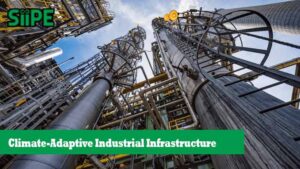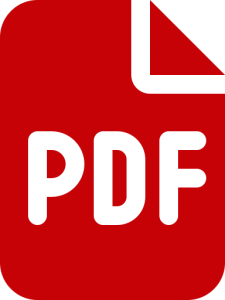Air pollution is a significant environmental concern in industrial areas, where manufacturing processes release a variety of pollutants into the atmosphere. These pollutants, including particulate matter (PM), sulfur dioxide (SO2), nitrogen oxides (NOx), volatile organic compounds (VOCs), and heavy metals, pose severe health risks and environmental degradation. Proper management of air pollution is crucial to mitigating its impact on human health and ecosystems.
Sources of Air Pollution in Industrial Areas
Industrial activities contribute to air pollution through various processes, including:
- Combustion of Fossil Fuels: Factories and power plants burn coal, oil, and natural gas, releasing greenhouse gases (GHGs) and other harmful pollutants.
- Chemical Manufacturing: Industries involved in the production of chemicals, paints, and pharmaceuticals release VOCs and toxic fumes.
- Metal Processing: Smelting, welding, and other metalworking processes emit heavy metals and particulate matter.
- Construction and Mining: Dust from construction and mining operations contributes to PM pollution.
- Waste Incineration: Burning industrial waste releases toxic gases and particulate matter.
Impacts of Industrial Air Pollution
Air pollution in industrial areas leads to several adverse effects:
- Health Problems: Prolonged exposure to industrial air pollution can cause respiratory diseases, cardiovascular issues, and even cancer.
- Environmental Damage: Acid rain, caused by SO2 and NOx emissions, damages soil and water bodies, affecting agriculture and aquatic life.
- Climate Change: Industrial emissions of CO2 and methane contribute to global warming.
- Reduced Air Quality: High pollution levels result in smog, reducing visibility and harming urban living conditions.
Strategies for Managing Air Pollution in Industrial Areas
Efficient air pollution management involves regulatory measures, technological advancements, and sustainable industrial practices.
1. Regulatory Measures
Governments and environmental agencies play a crucial role in controlling air pollution through policies and regulations, such as:
- Emission Standards: Setting limits on emissions from industries.
- Environmental Permits: Requiring industries to obtain permits that enforce pollution control measures.
- Air Quality Monitoring: Establishing monitoring stations to track air quality and enforce compliance.
2. Adoption of Cleaner Technologies
Industries can adopt innovative technologies to minimize emissions, such as:
- Electrostatic Precipitators (ESPs): Remove particulate matter from industrial exhaust gases.
- Scrubbers: Capture sulfur dioxide and other harmful gases before they are released into the air.
- Catalytic Converters: Reduce NOx emissions from industrial furnaces and vehicles.
- Carbon Capture and Storage (CCS): Prevent CO2 emissions from reaching the atmosphere by storing them underground.
3. Sustainable Industrial Practices
Adopting greener industrial practices can significantly reduce air pollution. These include:
- Energy Efficiency: Using energy-efficient machinery and optimizing production processes.
- Renewable Energy Sources: Switching to solar, wind, and hydroelectric power reduces reliance on fossil fuels.
- Waste Reduction and Recycling: Minimizing industrial waste decreases the need for incineration and landfill disposal.
- Green Manufacturing: Implementing eco-friendly raw materials and production techniques.
4. Urban and Industrial Planning
Proper planning can help mitigate the effects of industrial air pollution:
- Zoning Regulations: Separating industrial areas from residential and commercial zones.
- Green Belts and Buffer Zones: Planting trees around industrial sites to absorb pollutants and improve air quality.
- Public Transportation Improvements: Reducing vehicle emissions through better public transport options.
5. Community Engagement and Awareness
Engaging local communities in pollution management fosters responsibility and cooperation. Industries can:
- Conduct environmental impact assessments (EIA) before setting up operations.
- Educate workers and residents about pollution control measures.
- Encourage reporting of violations through public hotlines and feedback systems.
Case Studies of Effective Air Pollution Management
Several countries and industries have successfully managed air pollution through strategic interventions:
- China’s Air Pollution Control Action Plan: Implemented stricter emission limits, relocated heavy industries, and promoted green energy.
- Germany’s Green Manufacturing Initiatives: Focused on energy efficiency and sustainable industrial practices.
- United States Clean Air Act: Established strong regulatory frameworks for industrial emissions.
Conclusion
Air pollution management in industrial areas requires a multi-faceted approach involving regulations, technology, sustainable practices, urban planning, and community engagement. Governments, industries, and society must work together to ensure cleaner air, a healthier environment, and sustainable economic growth. Implementing and continuously improving pollution control measures will help mitigate the impact of industrial activities on air quality, protecting both human health and the planet.











